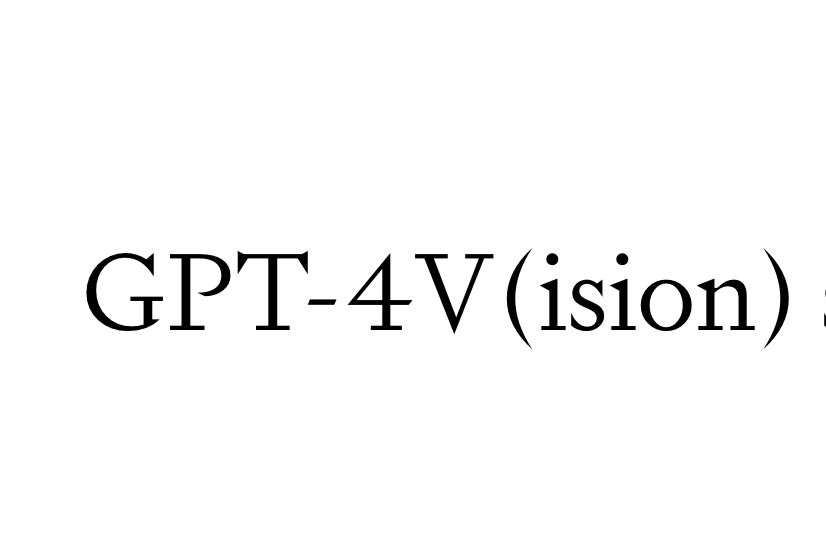Capabilities of GPT-4V revealed! Here are some details on the visual recognition capabilities of GPT-4V based on what is mentioned in the system card.
GPT-4 Vision
GPT-4 with Vision (GPT-4V) allows users to direct GPT-4 in analyzing images they provide, marking our newest broad-access feature. Many consider integrating different modalities, like image inputs, into large language models (LLMs) as a pivotal step in AI research and development.
Such multimodal LLMs have the potential to broaden the influence of language-only platforms by introducing unique interfaces and abilities, equipping them to tackle fresh challenges and deliver unprecedented experiences to users. This system card delves into the safety aspects of GPT-4V. OpenAI extended the safety research from GPT-4 to GPT-4V, emphasizing the evaluation, preparation, and safeguarding specific to image inputs.
Capabilities of GPT-4V
- Object detection: GPT-4V can detect and identify common objects in images, like cars, animals, household items, etc. Its object recognition abilities were evaluated on standard image datasets.
- – Text recognition: The model has optical character recognition (OCR) capabilities to detect and transcribe printed or handwritten text in images into machine-readable text. This was tested in images of documents, signs, captions, etc.
- Face recognition: GPT-4V can locate and identify faces in images. It has some ability to recognize gender, age, and ethnicity attributes based on facial features. Its facial analysis skills were measured on datasets like FairFace and LFW.
- CAPTCHA solving: The model has shown aptitude for visual reasoning to solve text and image based CAPTCHAs. This indicates advanced puzzle-solving capabilities.
- Geolocation: GPT-4V has some skill at identifying the city or geographic location depicted in landscape images. This demonstrates world knowledge the model has absorbed.
- Complex images: The model struggles with accurately interpreting complex scientific diagrams, medical scans, or images with multiple overlapping text components. It misses contextual details.
Limitations in Visual Reasoning
- Spatial relationships: The model might have difficulty comprehending the exact spatial arrangement and placement of objects within an image. It could misrepresent the relative positions of objects to one another.
- Overlapping objects: Besides, when there’s significant overlap between objects in a picture, GPT-4V can sometimes find it challenging to determine where one object concludes and the other starts, potentially merging separate objects.
- Background/foreground distinction: GPT-4V might not always correctly discern which objects are in the foreground as opposed to the background. This can lead to inaccurate descriptions of the relationship between objects.
- Occlusion: In situations where objects are partly hidden or covered by others in a photo, GPT-4V might not recognize the concealed objects or overlook their interplay with nearby objects.
- Small details: The model can overlook or misconstrue tiny objects, text, or detailed elements in images, resulting in faulty descriptions of their relationships.
- Contextual reasoning: Also, GPT-4V’s capacity for in-depth visual reasoning isn’t particularly strong, which means it might not accurately analyze the broader context of an image or explain the implied relationships between objects.
- Confidence: Interestingly, the model could describe object interactions erroneously or even invent interactions confidently, even if the image doesn’t corroborate these relationships.
Read related articles:
